It might look unusual, but how will it ride? David checks out the Motion Ride E18 Linkage Fork.
Around 2011, there was a conversation I kept on having over and over again. It concerned an object I carried and used a lot, about which everyone had the same two questions. I got so tired of it, I almost got a sticker made: “Yes this is a Kindle. Yeah it’s alright, I like it. Please don’t bother me I’m reading”.
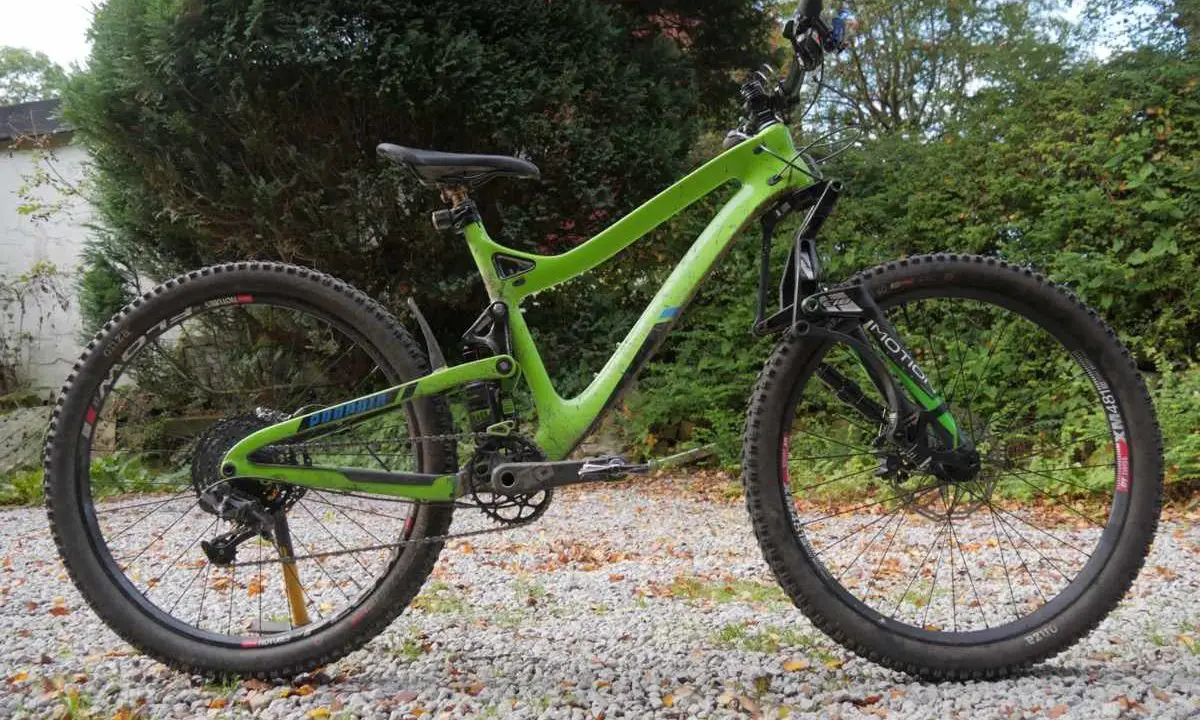
Eight years on, people ask me about this fork. There’s eyecatching, then there’s the Motion Ride E18 linkage fork, which is in a whole different league. Pop these on your bike, and you should plan on rides taking a bit longer just for the conversations.
Grabbing attention is merely a by-product of the design though, which is primarily aimed at creating anti-dive suspension. Rather than use air, boinging duty is handled by a carbon fibre leaf spring behind the right leg, all then tuned by a damper on the left.
Between all the burly aluminium linkages and terminations, the legs are carbon fibre tubes, bringing this fork in with a confirmed weight of 2.335Kg. Not the lightest fork, but only a few hundred grams more than a Lyrik or Fox 36.
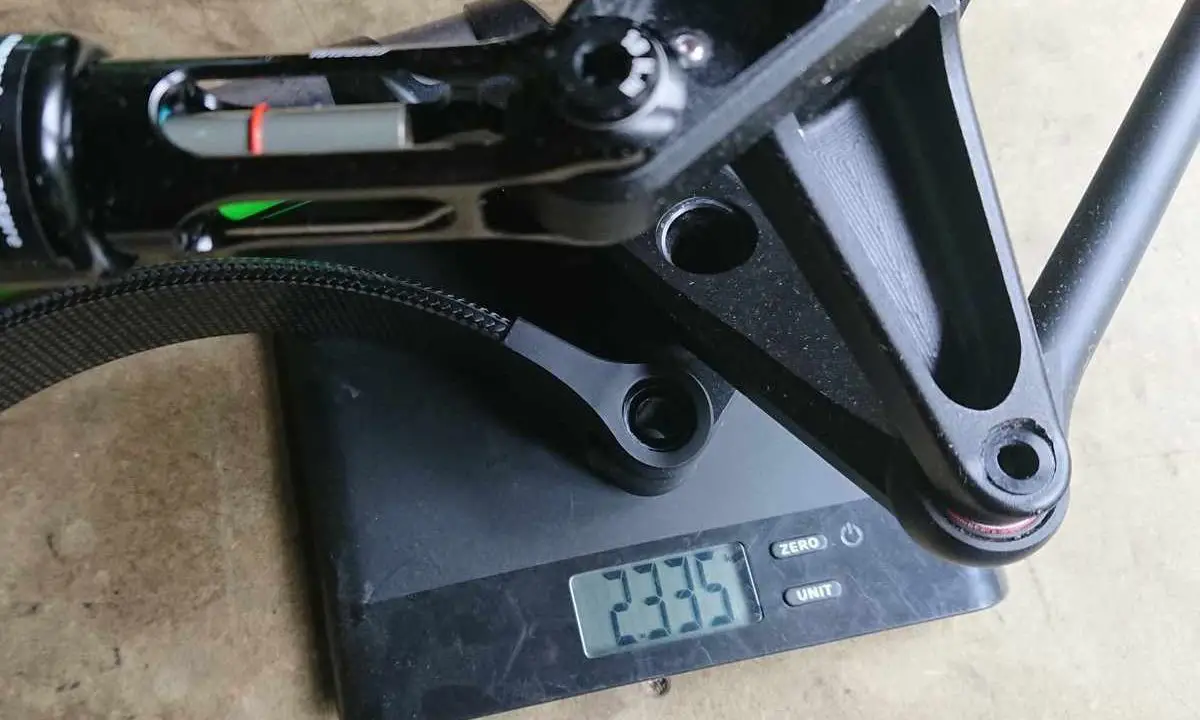
Fitting
While the E18 looks entirely unconventional, atop it is a decidedly standard tapered steerer that’ll work with any modern frame and headset. Nothing special needed there, fitting it is just like any other fork.
While standard, the alloy steerer seemed a tad undersized, as I was able to push a crown race onto it with my fingers. This didn’t create any issues or headset play during the test though.
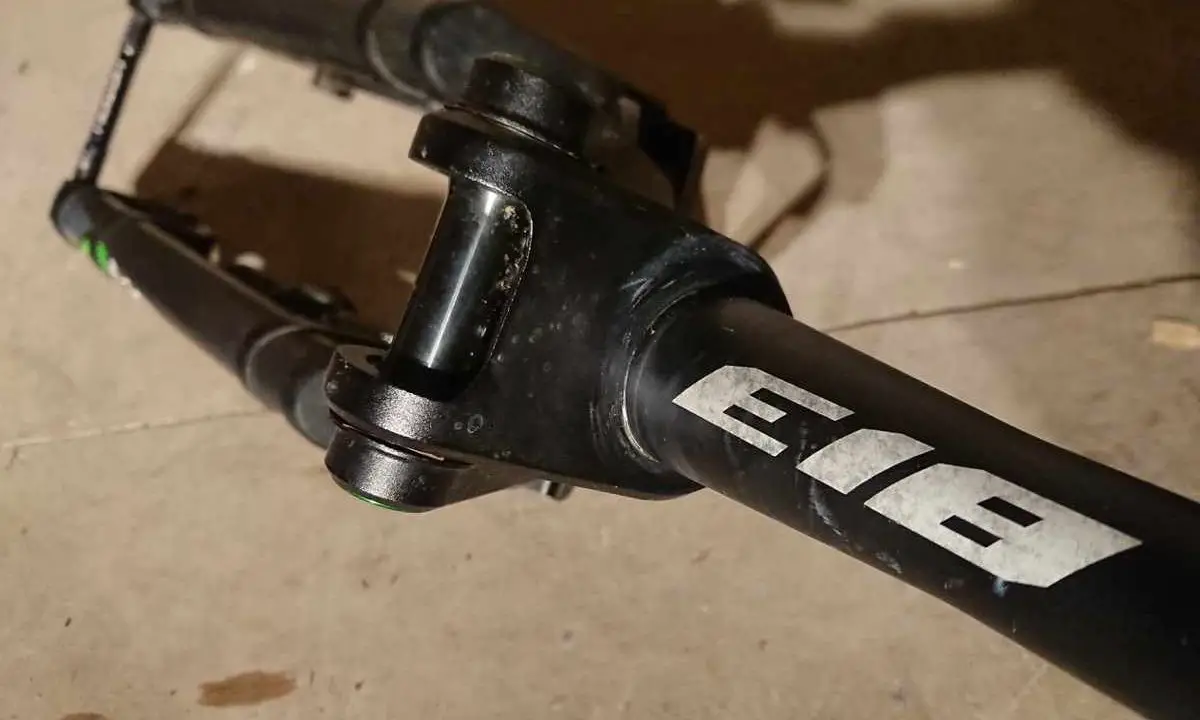
As I found previously with that other linkage fork I tested this year, brake hose routing requires some improvisation. Once again, I found my neatly trimmed front hose was insufficient to work its way around linkages.
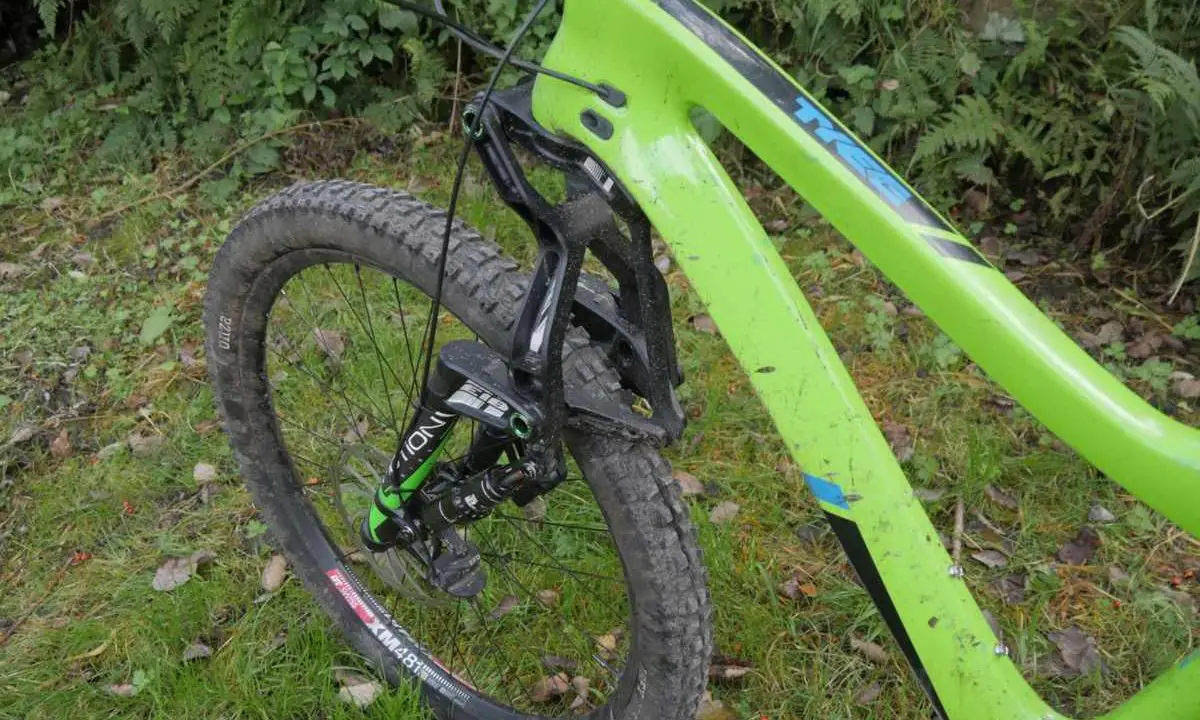
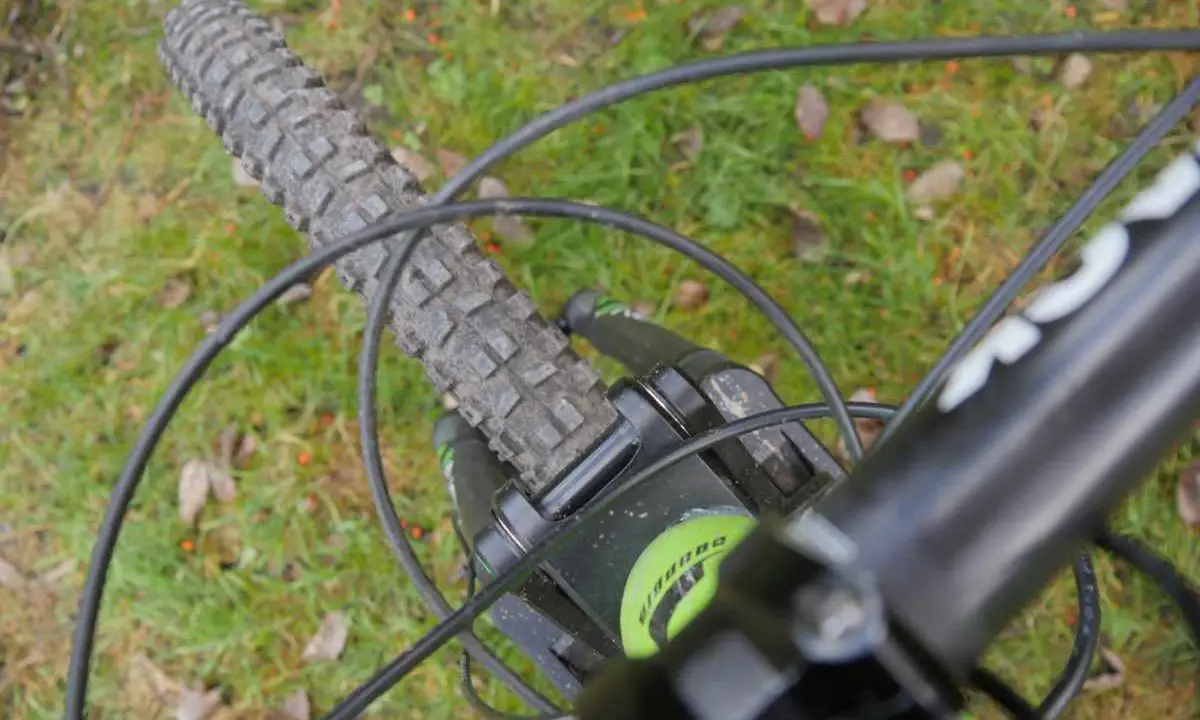
The only brake I had to hand with enough hose was a rear Brake Force One H2O, so like the lazy bastard I am, I popped that on and wound the hose round the stem a couple of times to take up most of the slack. Ugly, but much quicker than shortening and bleeding.
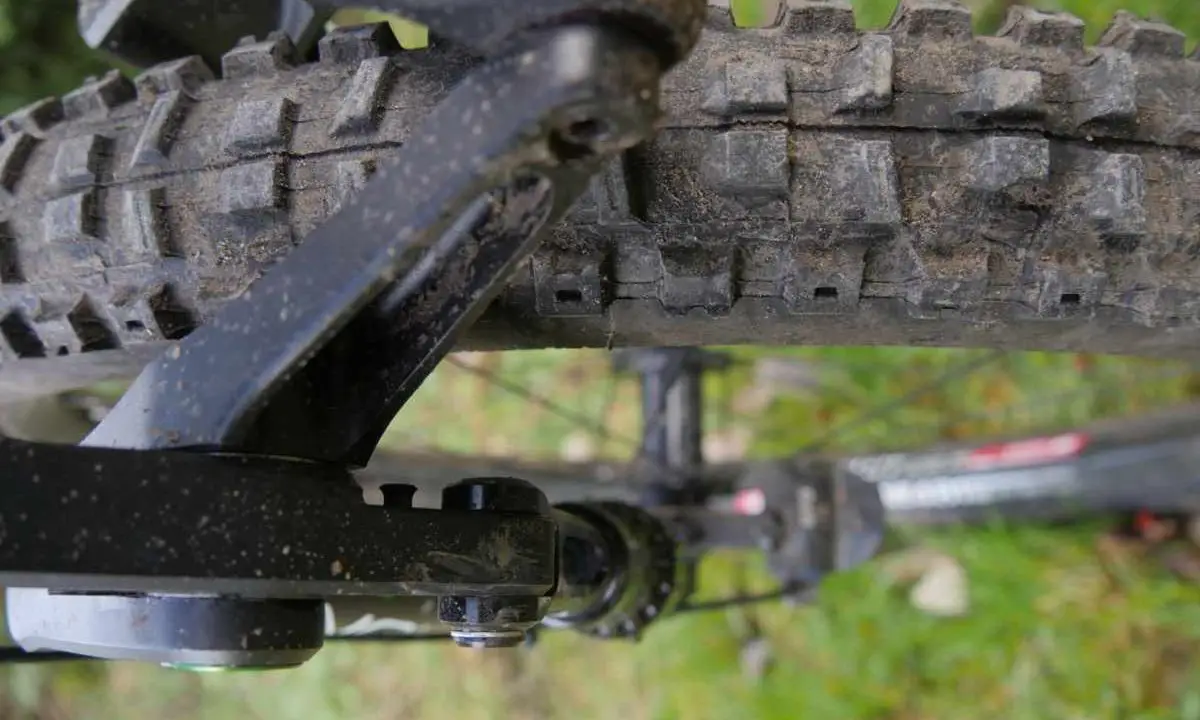
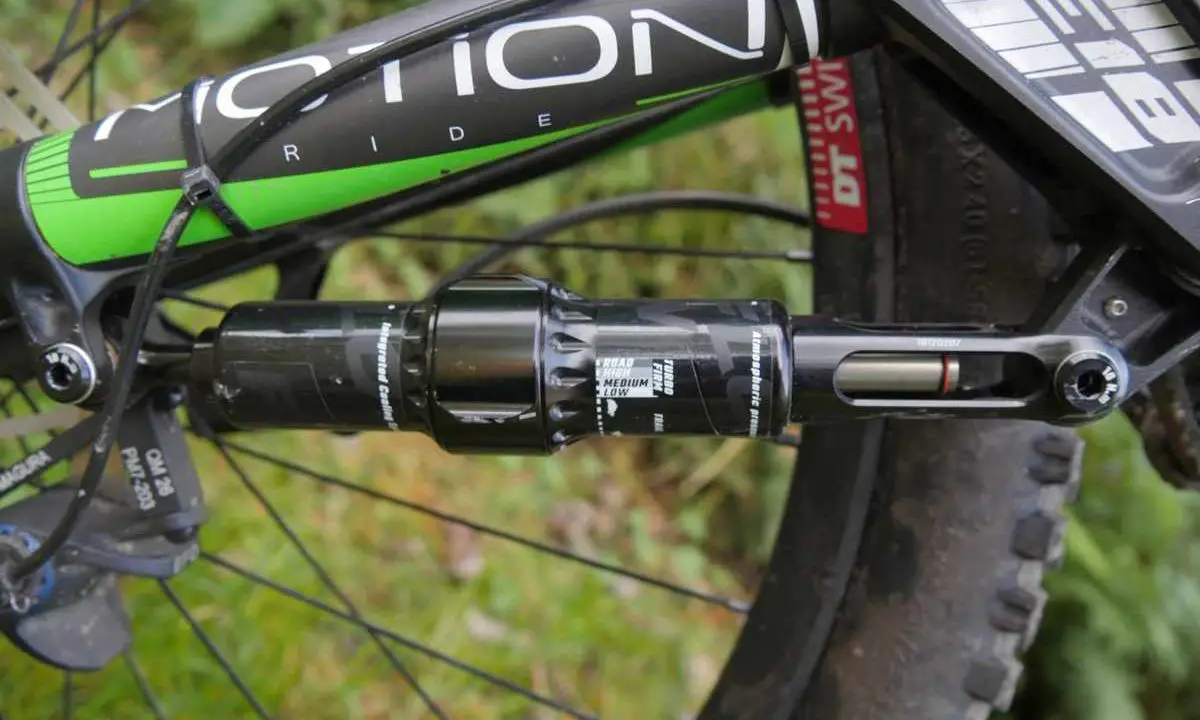
Motion Ride has made provision for routing hose as much on the inside as possible, with a little stud on the inside left leg, just above the damper. Unfortunately, Brake Force One’s super lightweight hose is too thin. Between that and the hose exit on the caliper, I ended up zip tying it up the outside of the fork leg and hoping I didn’t sever it in a crash.
Setup
Setting the fork up is much like any other: set sag, then damping.
Because it’s a carbon leaf spring, sag is set differently. A preload bolt at the bottom on the right side moves an indicator between min and max settings, and an o-ring on a shaft sticking out of the top of the damper indicates travel usage. The manual says 12mm of o-ring travel up the damper shaft is 30% sag, so that’s what I aimed for.
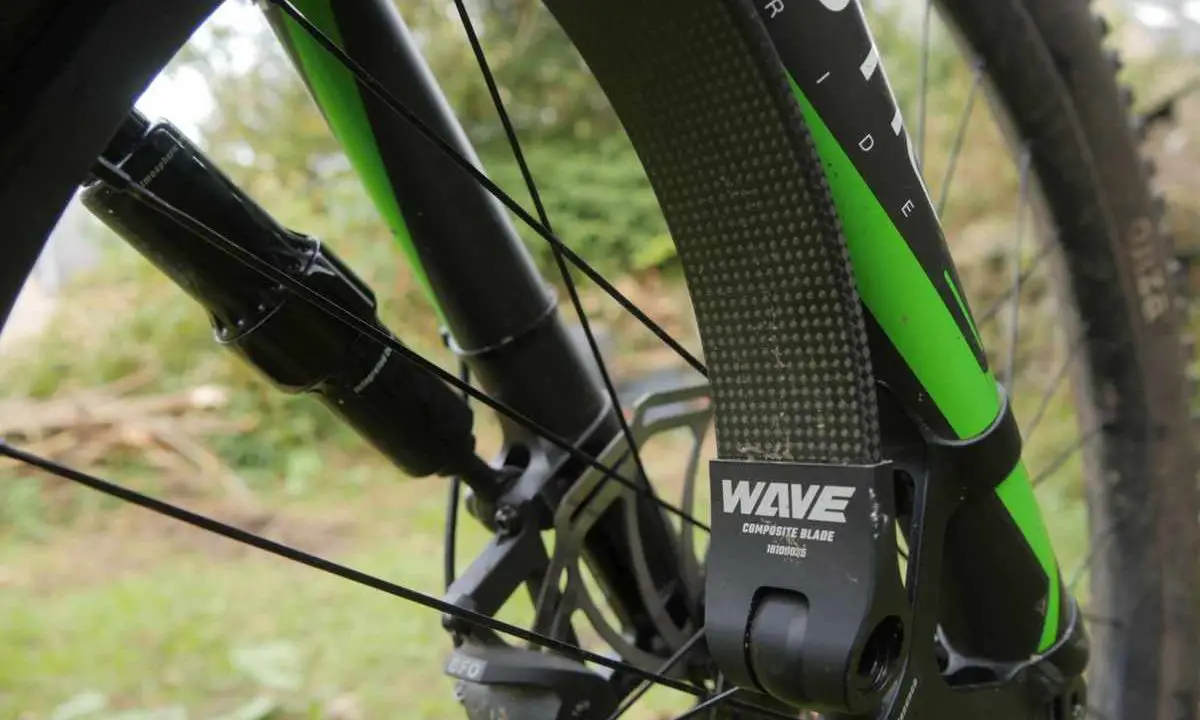
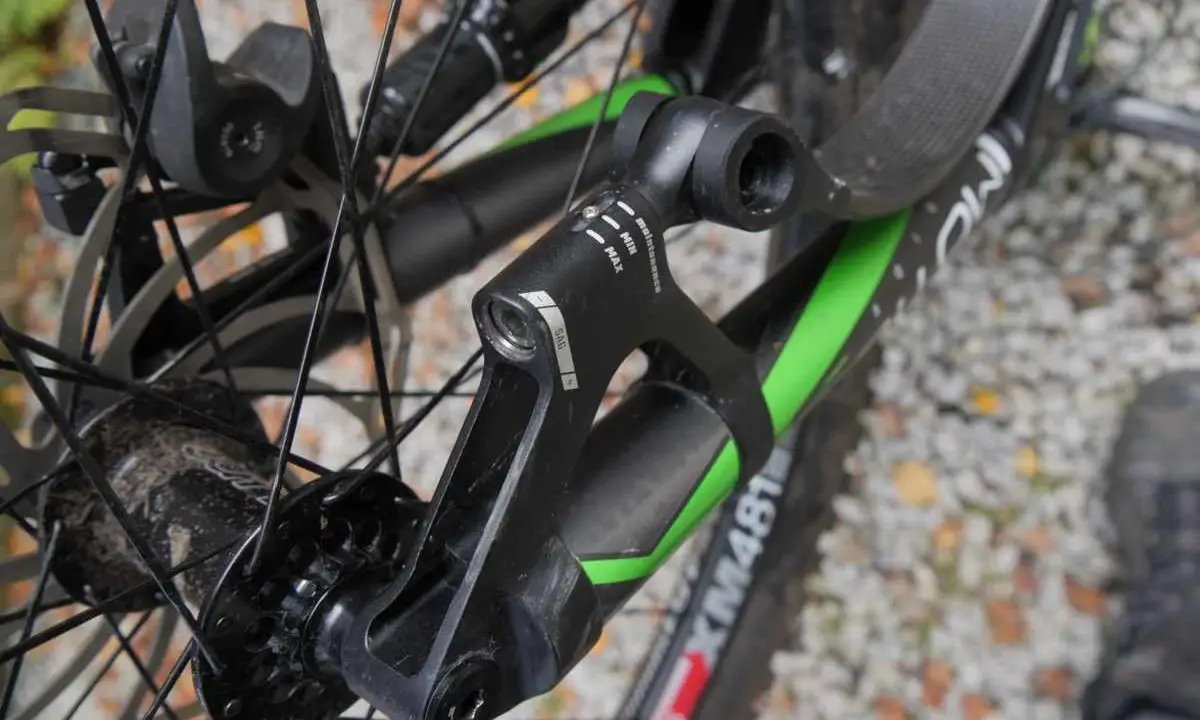
The preload bolt can also be wound all the way out to maintenance mode, which is for changing the spring – the fork should only be ridden with the indicator between min and max.
Spring preload also moves the legs relative to each other, making it more difficult to remove or insert the bolt-up through axle. Dropping the preload adjuster all the way down to maintenance mode will sort this, but obviously you need to record your settings and dial that back in every time you remove the wheel. That, or wrestle with the fork a bit.
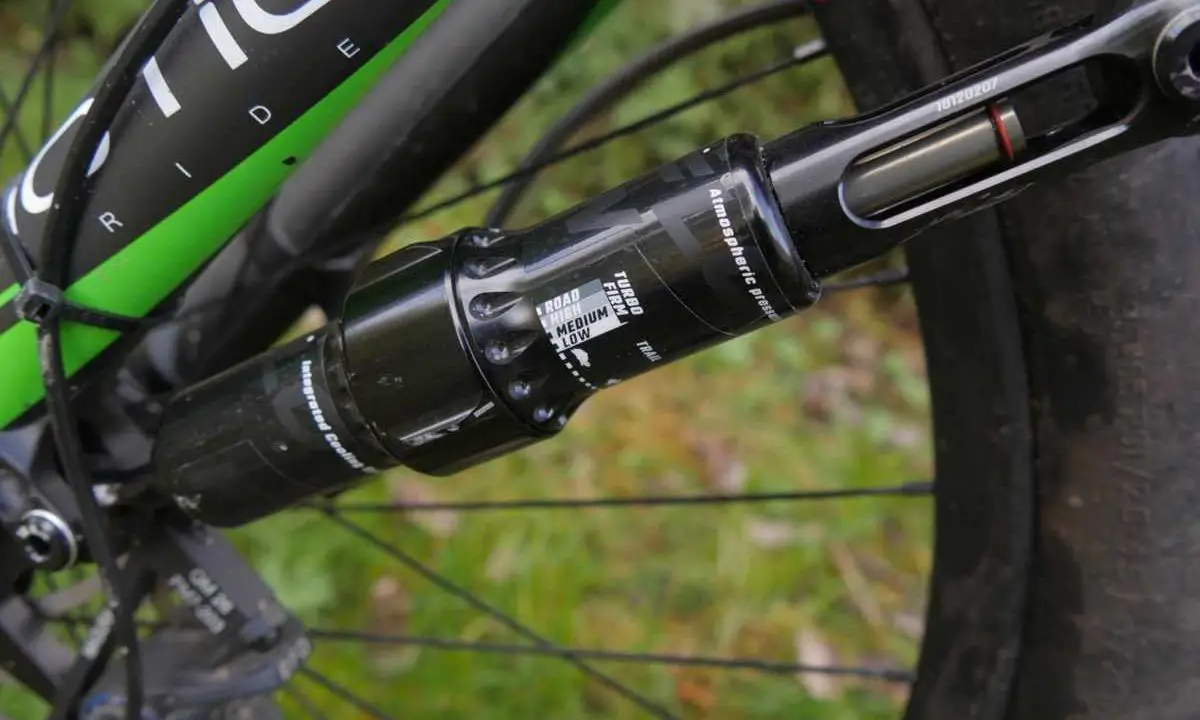
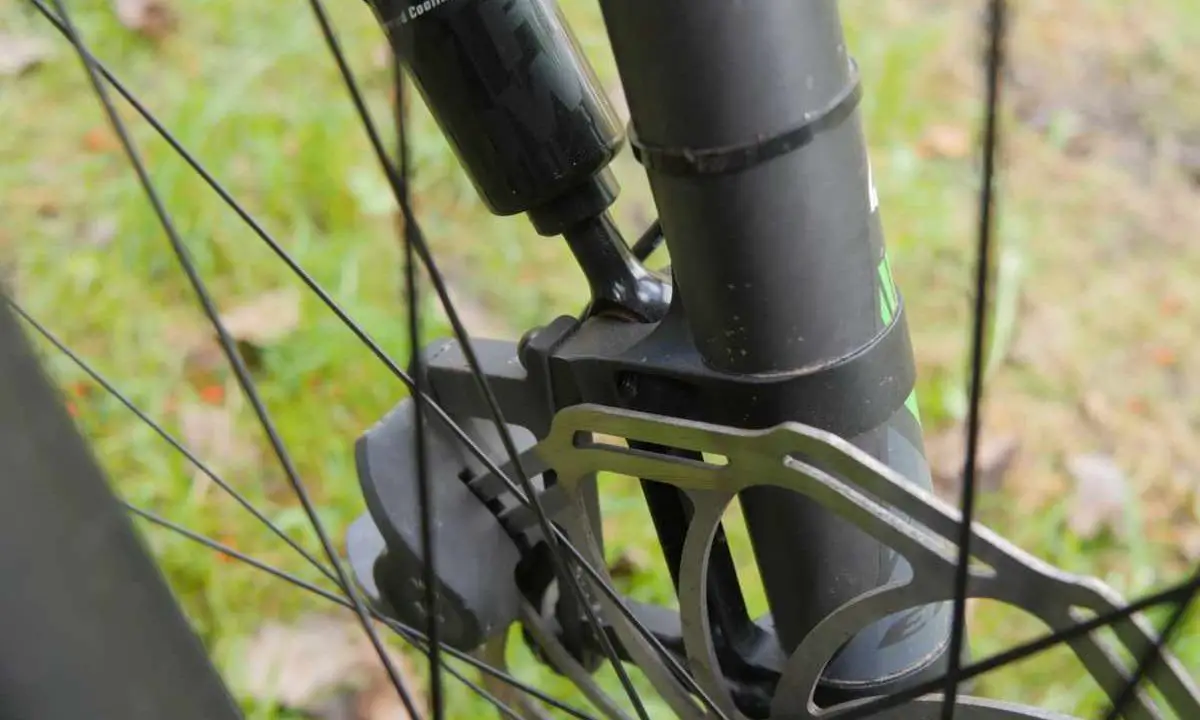
Damping has 11 settings, all adjusted by a single collar around the outside of the damper body. These are divided into two groups. Seven clicks are labelled “trail”, and marked for slow to fast rebound settings. The other four are labelled “Turbo Firm” for when you need more compression damping, and in order of firmness go Low, Medium, High, and Road. The Road setting is firm but not a lockout, so if you stand up to climb the fork still bobs quite a bit.
The Ride
On the first car park roll around, it doesn’t feel much different to standard telescopic forks. It is quickly obvious that the E18 is supple in the initial travel. Push it a little more and you’ll find that the compression ramps up quite cleanly, with no sudden jump into firmer mid-travel.
As with rebound on other forks, setting this is a matter of your weight, riding style, trail, terrain, and ultimately how the forks feel to you. I started out with some mellow pootling over the moors to test out different settings. For the most part, I ended up near the slow end of the trail settings, which roughly correlates to rebound settings that suit me on other forks too. This was also good for most descents.
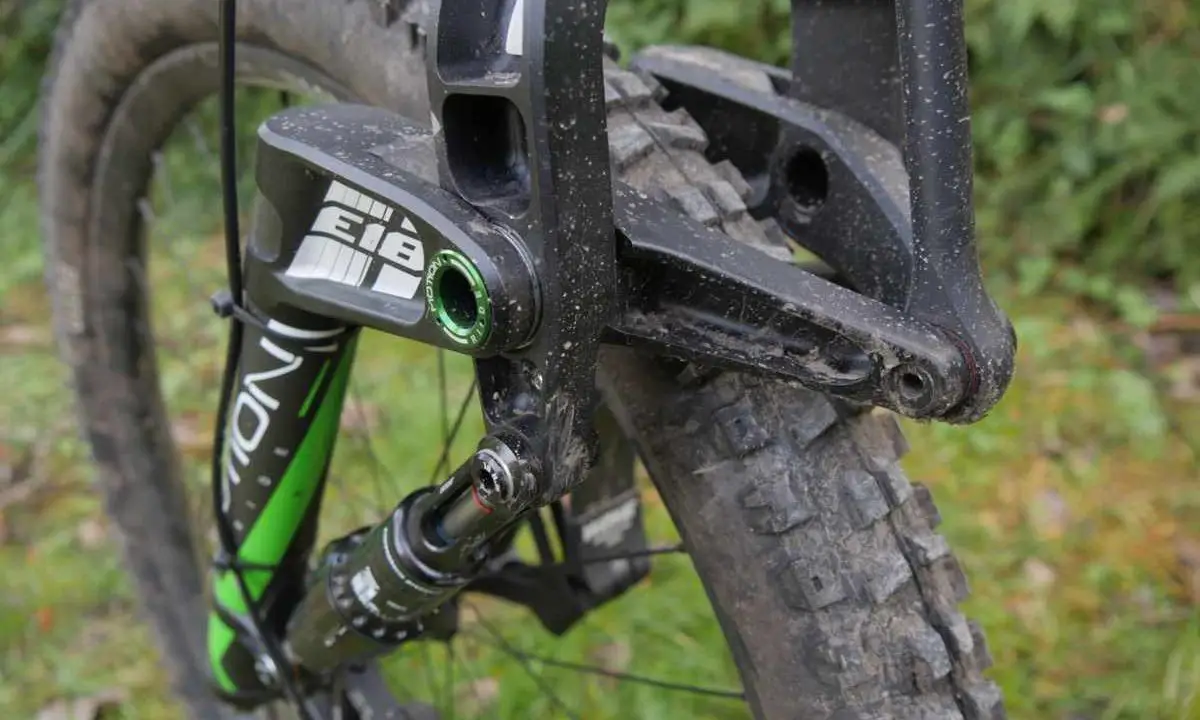
Very shortly into testing the first version of the fork we had, I noticed something harsh on rough descents, but it wasn’t bottom out or harsh rebound punching the wheel back into the ground. It was actually the fork topping out quickly whenever the wheel was off the ground, producing a constant thudding I could feel through the bars.
Other riders were reporting this at the same time, and in short order Motion Ride shipped a revised damper to us. I’m pleased to report this completely eliminated the topout, without seeming to compromise damping.
On the first wide open, fast descent I took them down, the anti-dive was also very apparent. Usually on grabbing the brakes, I automatically throw my weight back a little to compensate for the front of the bike dropping. I didn’t quite realise how automatic this was, until I braked on the E18, moved back, and… didn’t need to. The bike stayed the same shape, and I’ve not ridden a single other fork that can do that without being super harsh.
As well as anti-dive, the linkage has a notable characteristic in bump absorption, which I found most in sudden rocky holes of a bike length or longer. The E18 really absorbs that kind of chop in a way that lets you conserve momentum. That kind of bump absorption doesn’t necessarily correlate with the most comfortable forks. Many telescopic forks with really excellent small bump compliance make it very easy for these kind of features to sap momentum, especially if your weight transfer between wheels over the far lip isn’t perfect.
The E18 just ate them up and kept going though. In testing, I tend to reflect most on how good things are at climbing and decsending. It’s not often that something sticks out as good at traversing, but the E18 really is good at flat technical sections. In terms of small bump compliance, they’re not the most comfortable forks out there, but traversing a bog over a load of duck boards, found that any square edges around 5cm tall are basically unnoticable. Above that, they retain enough pop for dealing with trail obstacles.
One minor thing I found pushing them harder on fast descents was that they’re a bit less forgiving of front wheel washouts, which took more effort to correct than I’m used to.
I felt no need for the firmer damping modes until I got to some steeper, harsher descents. In particular, a series of quick drops into root bowls saw the fork struggling to recover, but that was decisively fixed by the two softest of the Turbo Firm modes – they’ve obviously tested this for a wide range of riding, and as a somewhat lighter rider at just under 80Kg with kit, it makes sense I woudln’t need the very firmest settings.
The final test rides I did were almost exclusively on the steepest descents I know, as I really wanted to push the anti-dive to its limit. Motion Ride’s anti-dive claims really aren’t marketing bullshit, and make the E18 incredibly confidence inspiring on steeper descents, even in the rain.
On really steep sections there are always points of having to let go of the brakes and have faith in the line you’ve chosen. This fork gave me a lot more choice over when those moments were, all while keeping the same body position.
Are Linkages The Future?
As I mentioned above, earlier this year I reviewed the 130mm Trust Message, which is also a linkage fork. These two forks are extremely different, with linkages designed for dissimilar purposes. The Message is designed to preserve head angle throughout the travel, leading to extremely stable cornering performance. In the end, on the rocky plunges I tend to ride, cornering is not the emphasis and I felt the tradeoffs weren’t worthwhile in that case. Additionally, the fork feels extremely different to anything else you’ve ridden, so at first takes a bit of faith to understand.
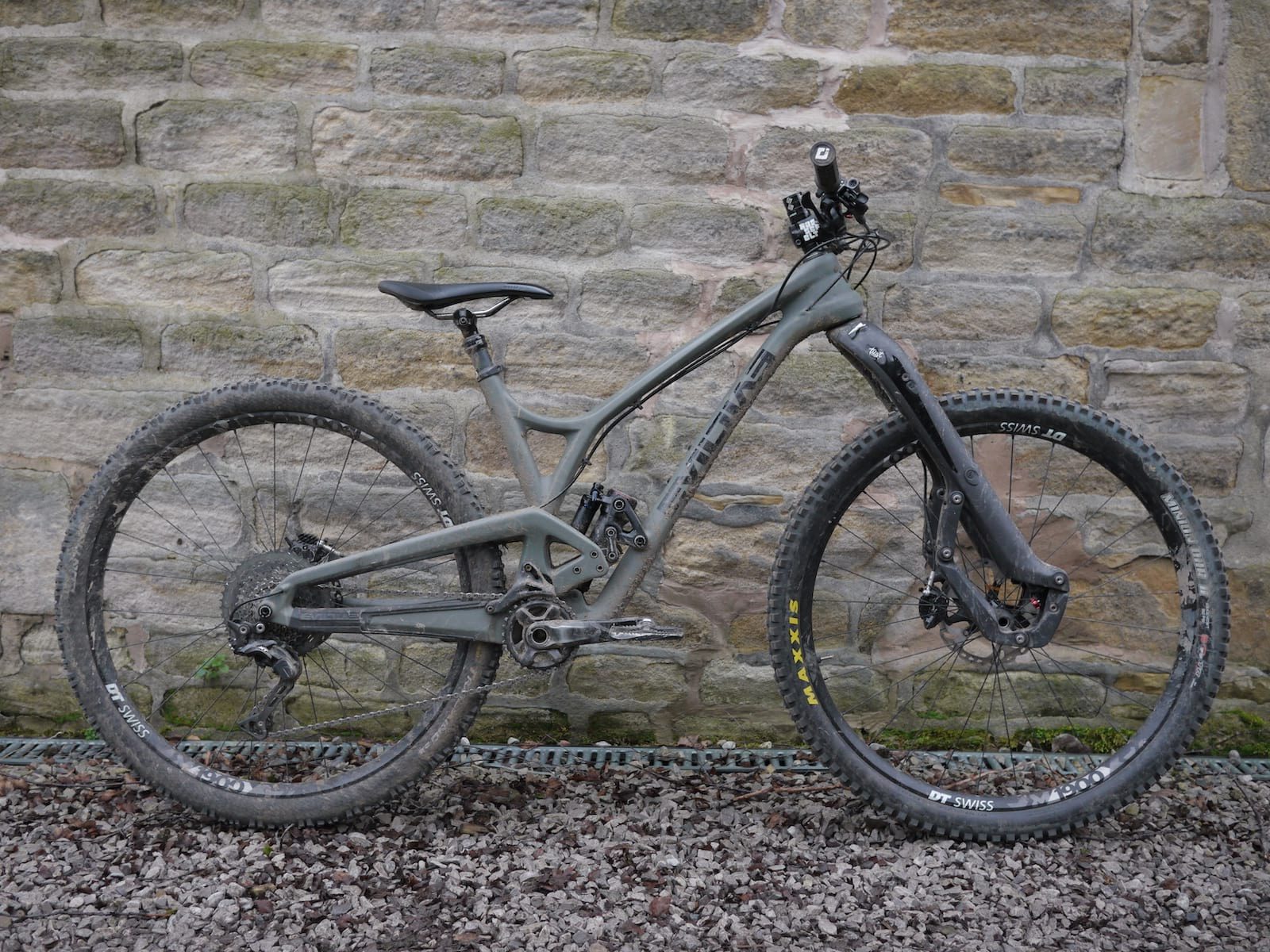
Motion Ride’s E18, despite it’s preying mantis looks, out the box has a feel much closer to that of a telescopic fork and a similar axle path too. This makes setup more straightforward and understandable. Consequently, it’s also easier to pick out settings and adjustments as you ride.
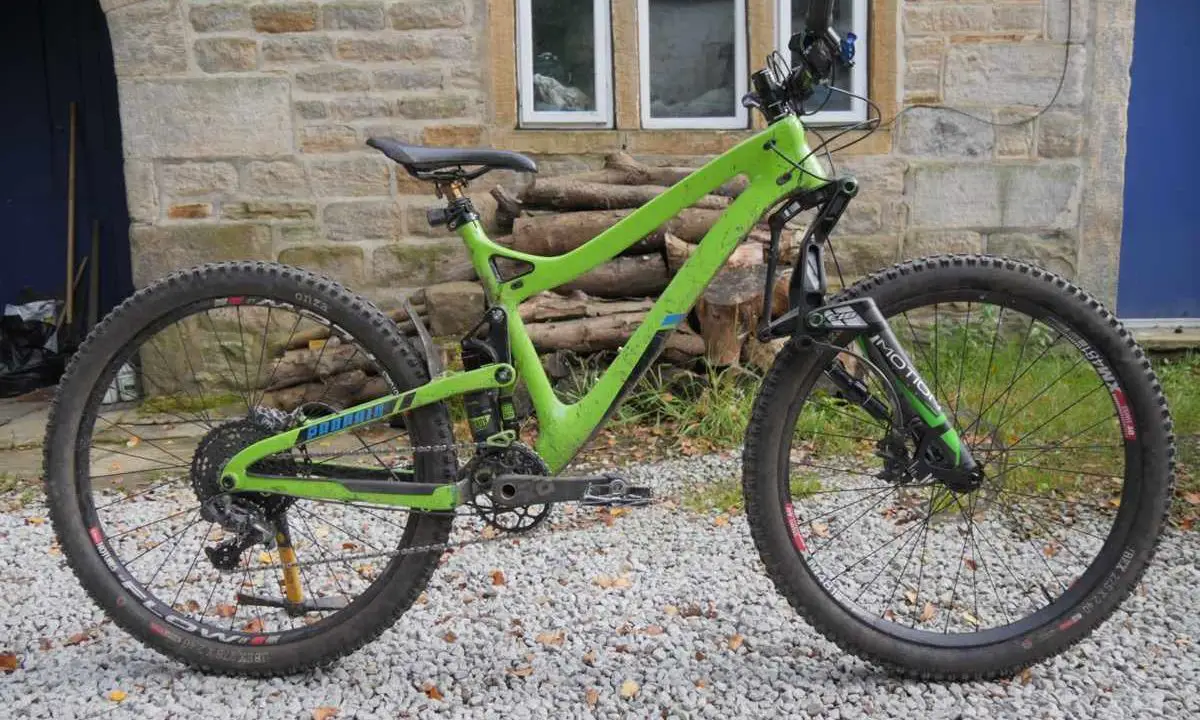
Over the years I’ve been completely and utterly spoilt by some very high end forks that offer a lot of adjustment – such as Formula with their CTS valve system. In comparison, the adjustments on the E18 feel maybe a tad simple, especially having no separate adjustment dials for compression and rebound damping, but overall they’ve done a good job providing a wide range of settings to cover most riders and terrain.
2019 feels like the year people are leaving the checkered past of retro linkage forks behind and pushing designs somewhere good. Considering the decades long headstart on telescopic fork development, and that some people think they might be near their design limits, linkage forks definitely have some headroom for catching up.
Overall
I’m impressed. The E18 is a good fork with some unique characteristics. The benefits are most noticeable in rough traverses and steep descents, where it retains momentum and gives good support. If you’re a suspension nerd and deeply enjoy tweaking, you might find the damper settings a touch simplistic. By the same token, that also makes these forks more accessible to non-pro suspension fettlers.
Review Info
| Brand: | Motion Ride |
| Product: | E18 150mm |
| From: | motion-ride.com or upgradebikes.co.uk |
| Price: | €1,140 |
| Tested: | by David Hayward for 4 Months |
Comments (5)
Leave Reply
Post Comment
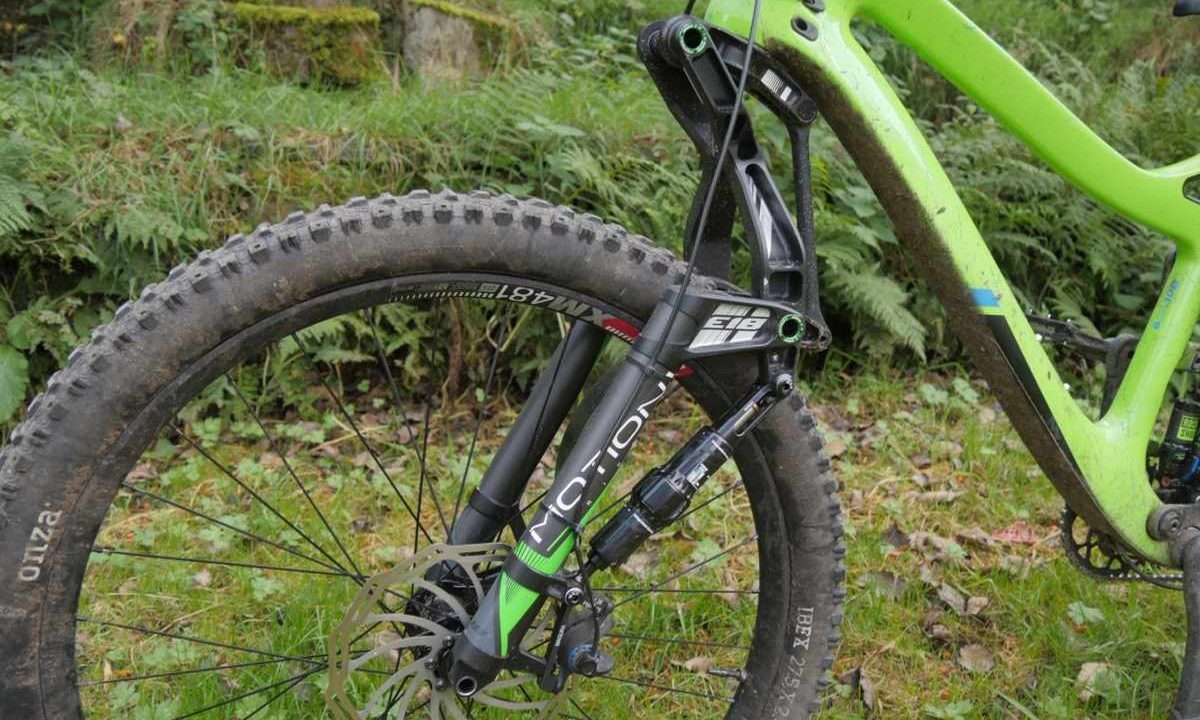
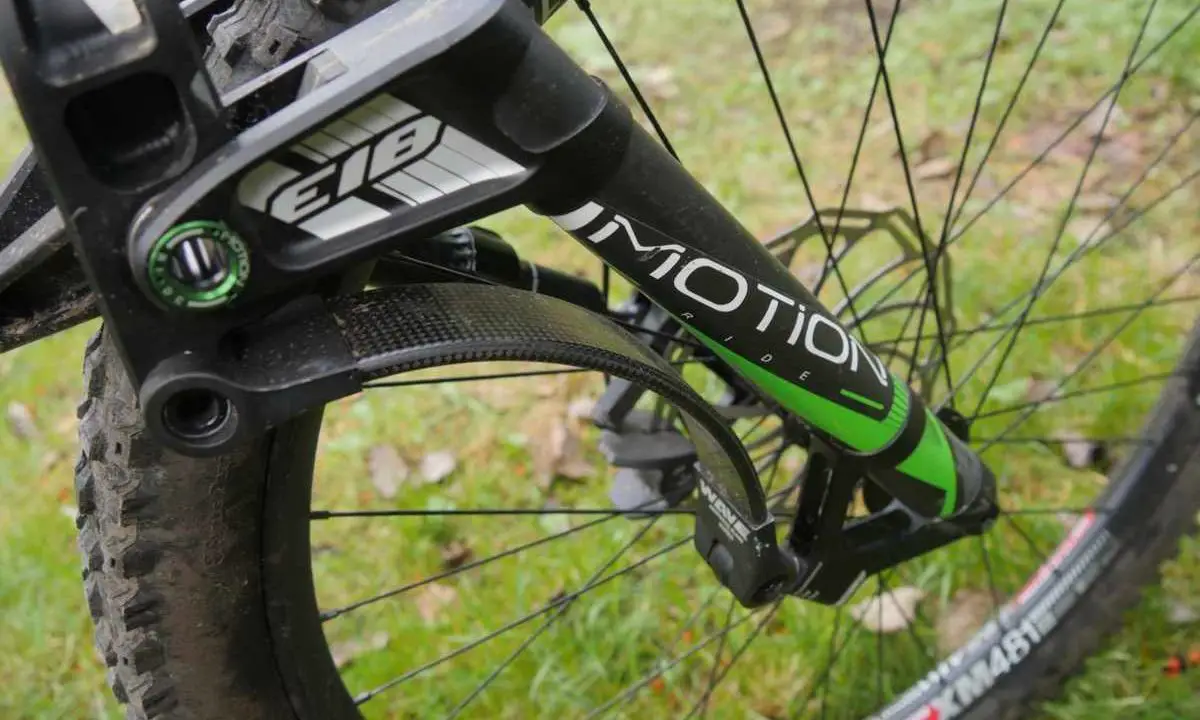
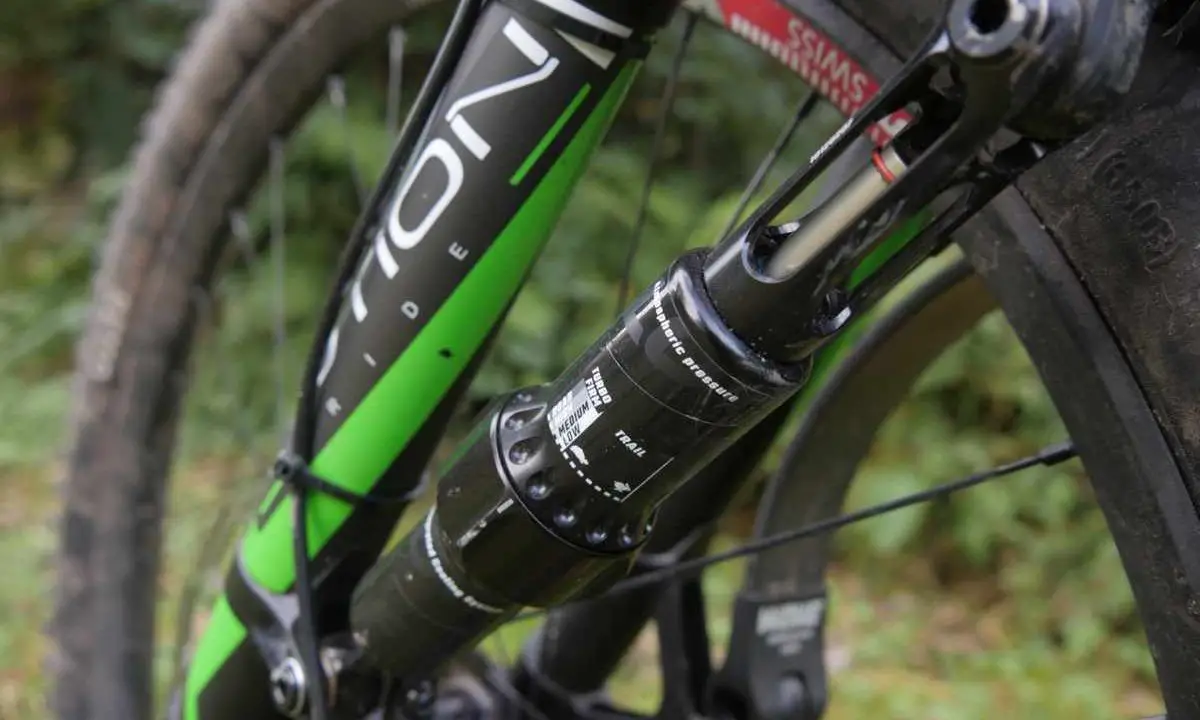
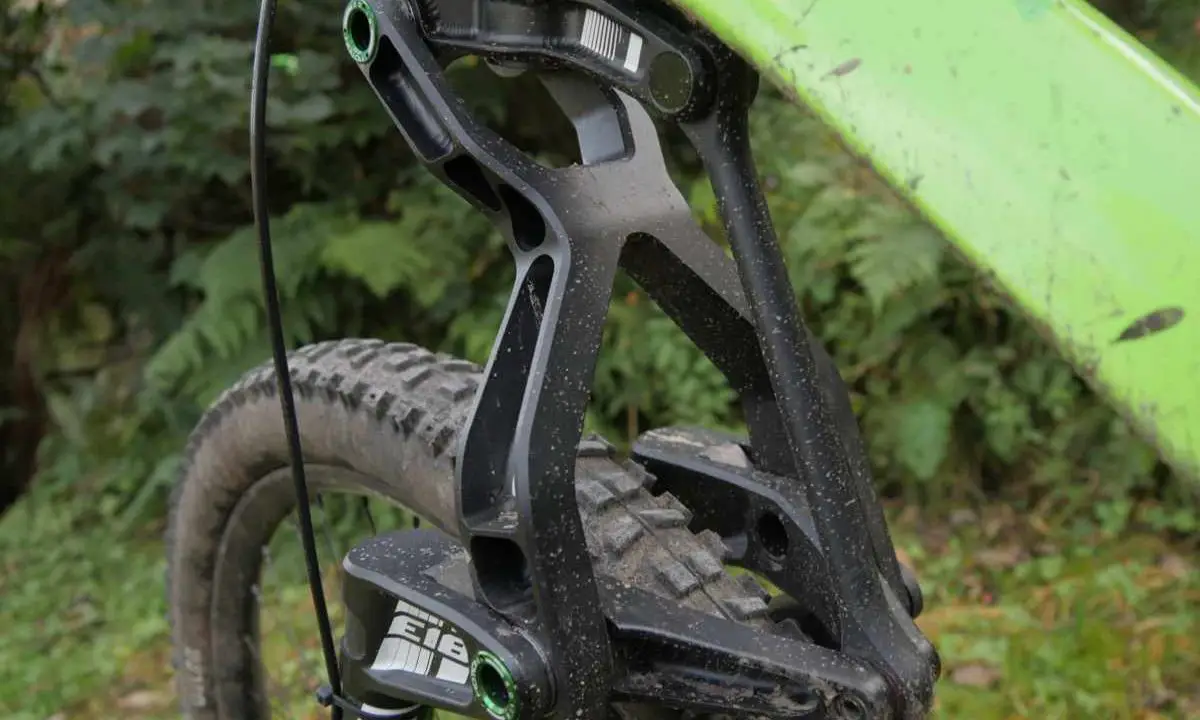
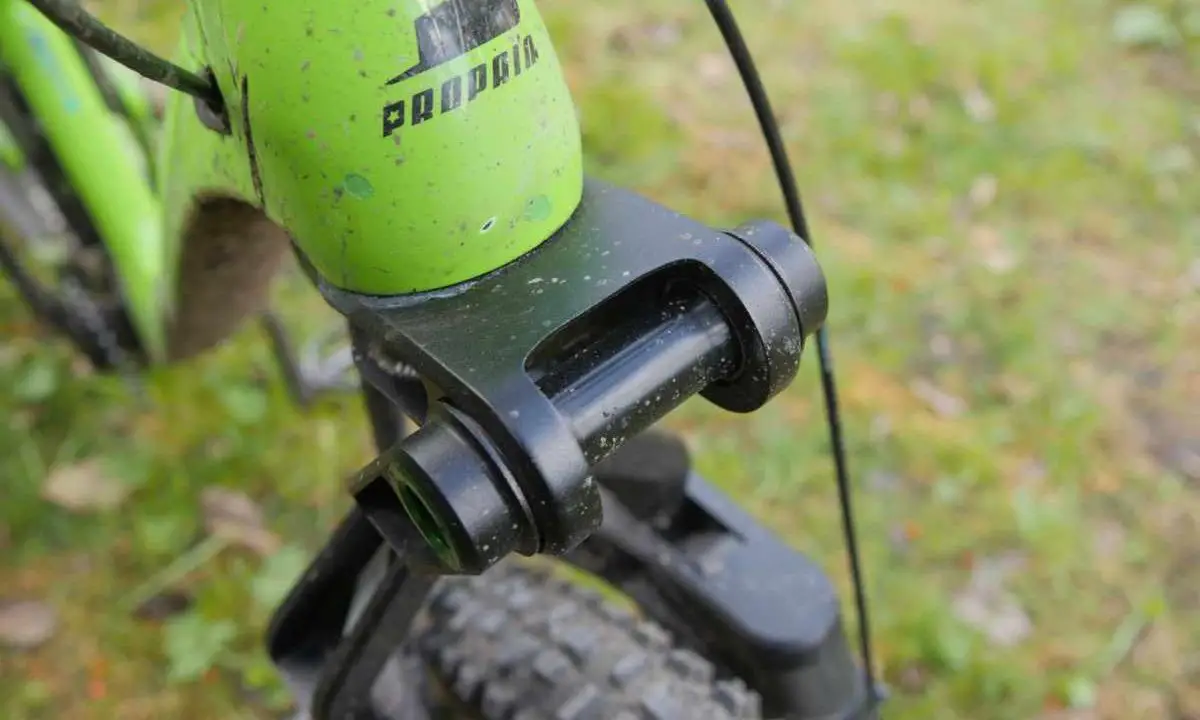
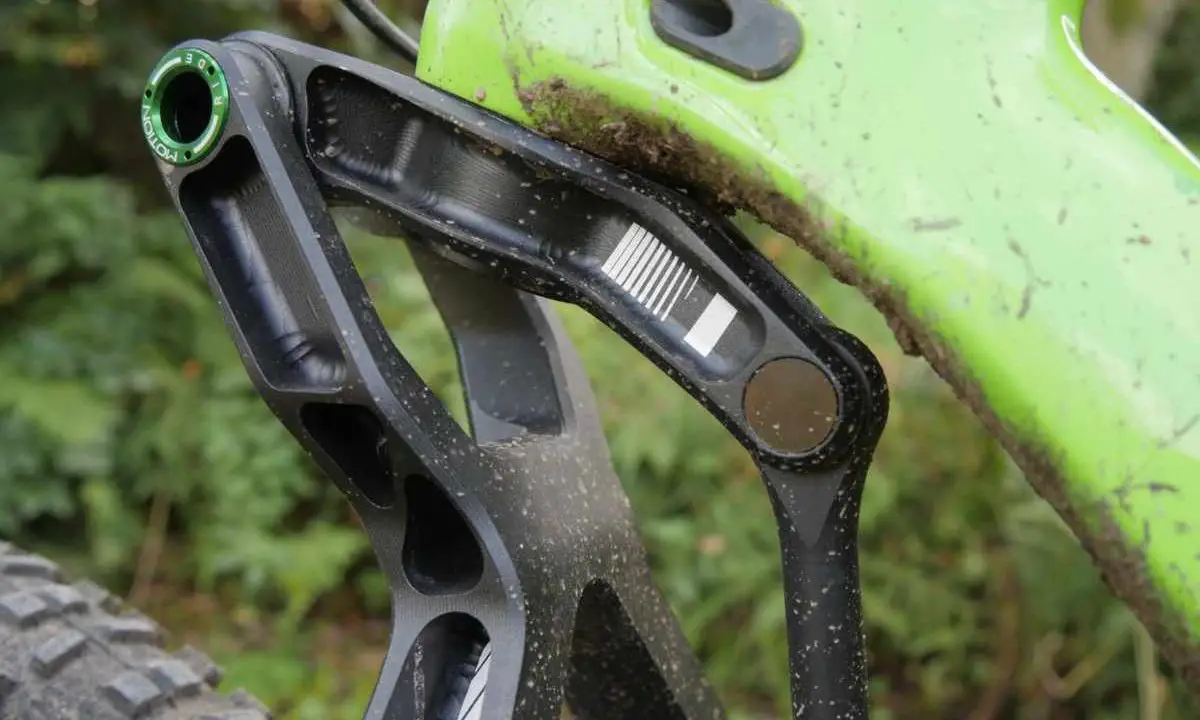
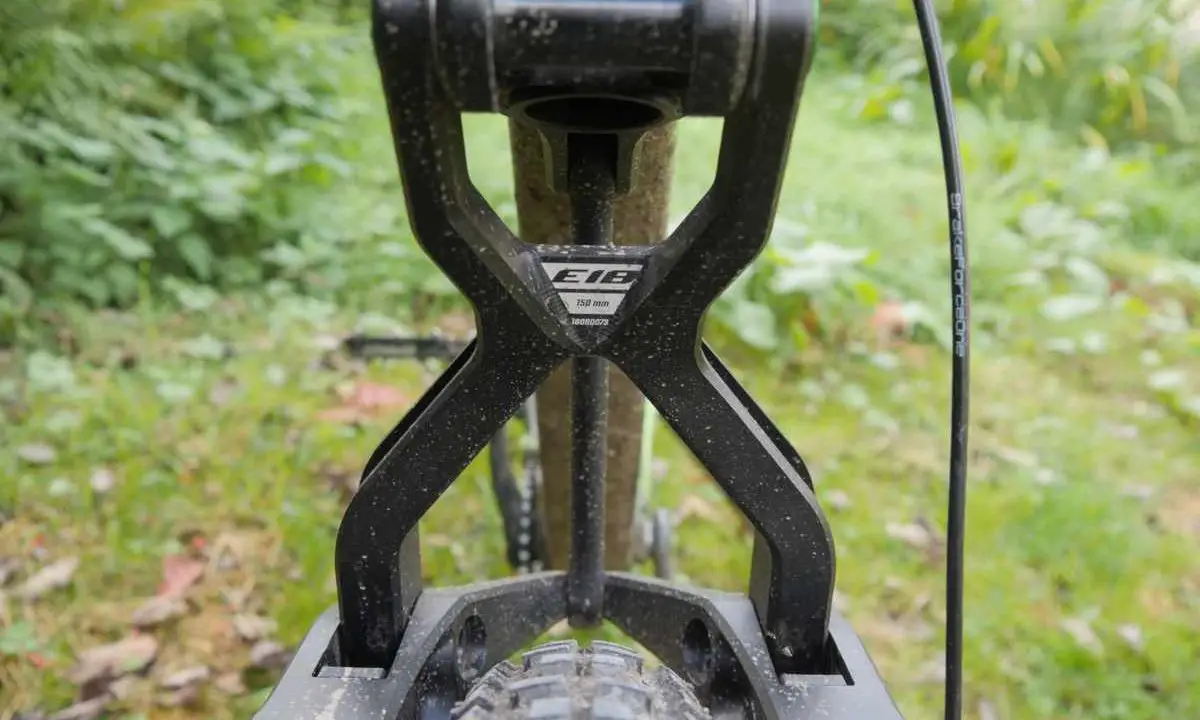
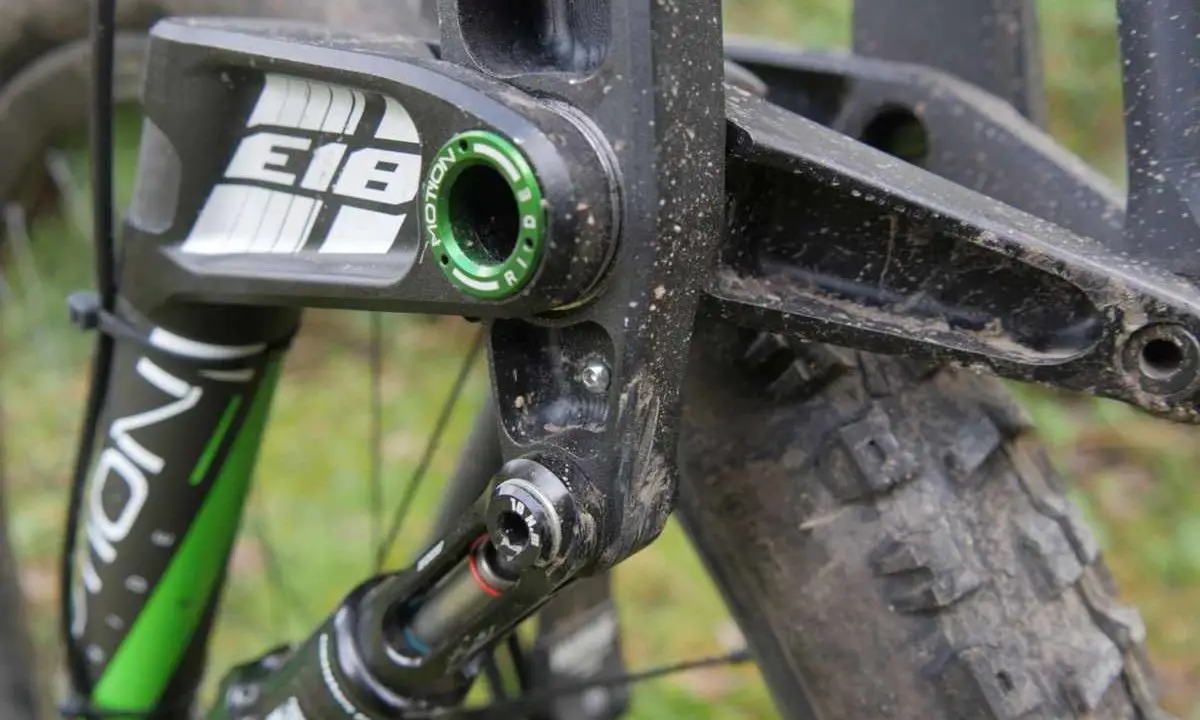
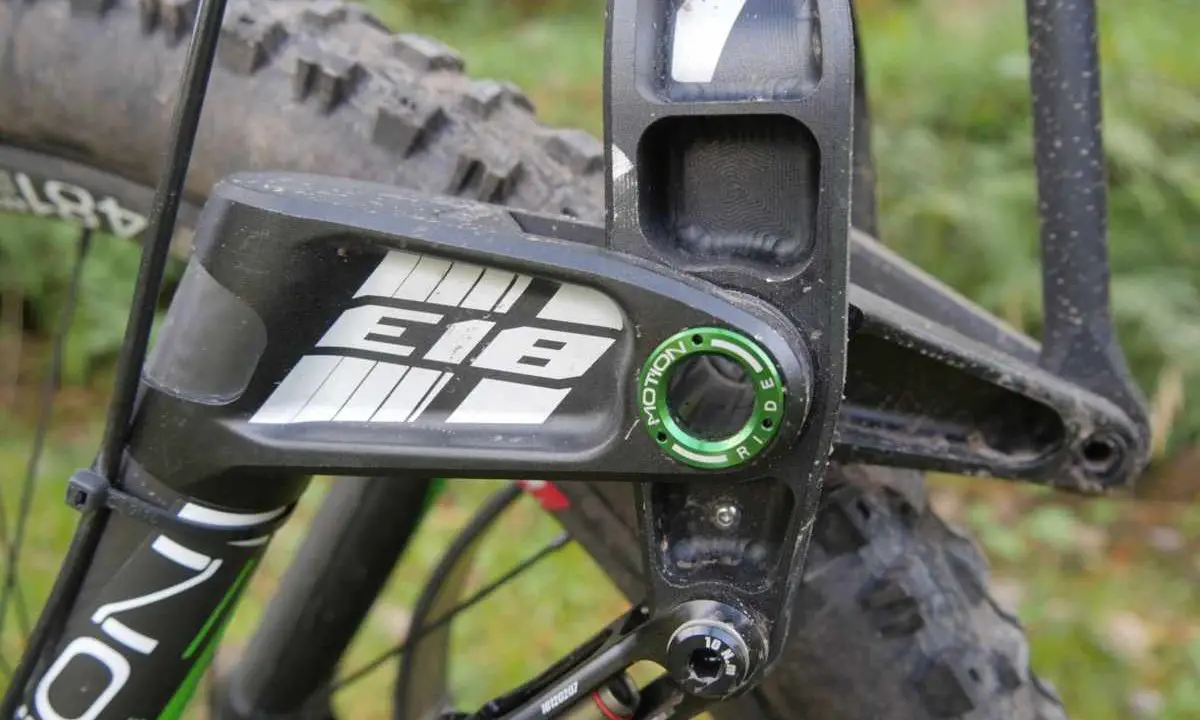
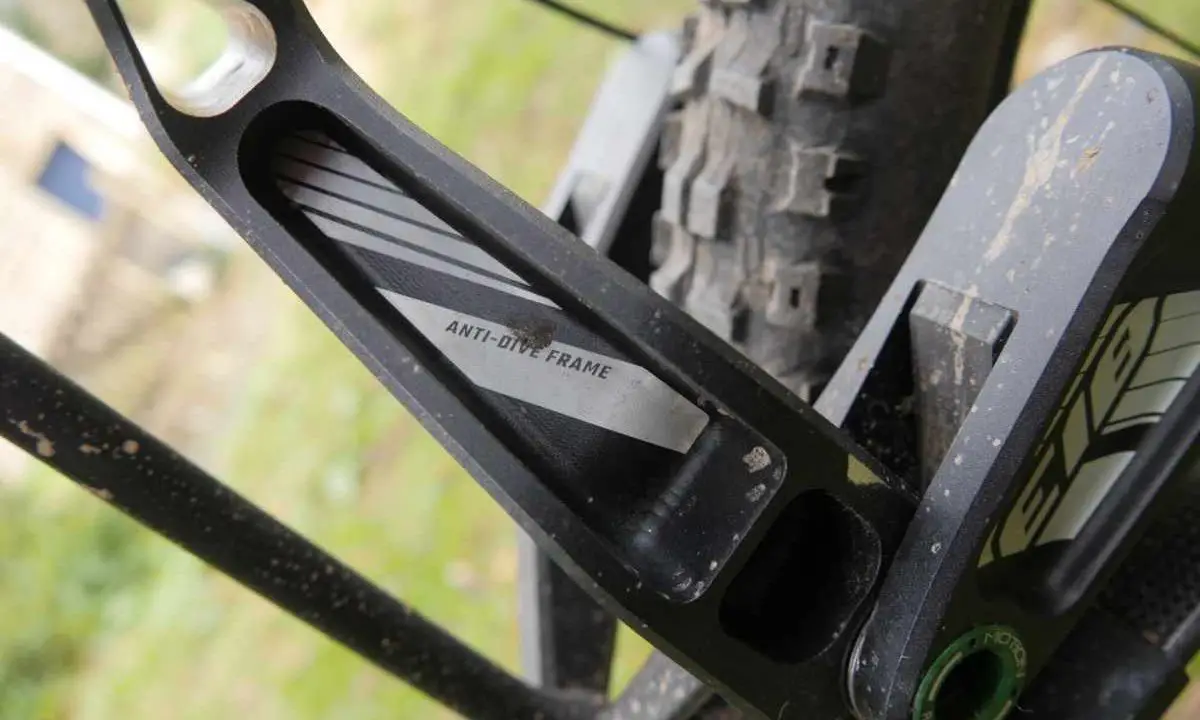
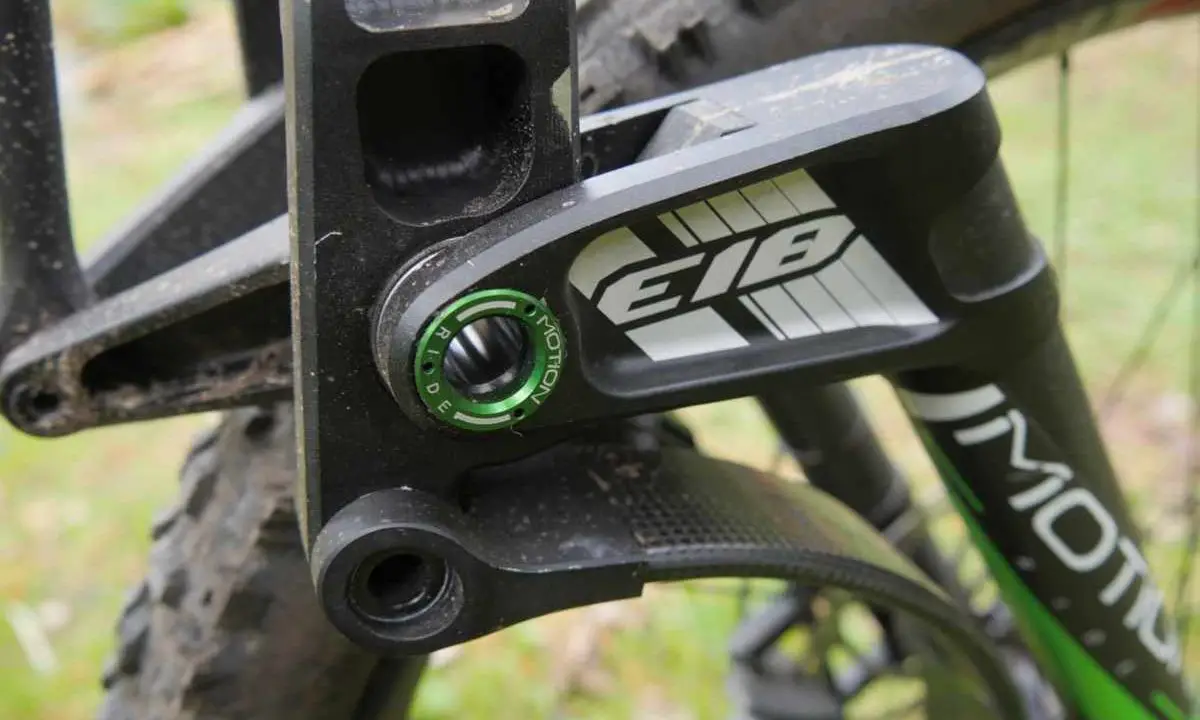
It is properly ugly though
“Are Linkages The Future?” As ever: No. Telescopic forks just do the job and aren’t hideous.
What’s the travel on them? Can’t seem to see it in the article anywhere…
Doh! Apart from that bit at the end where it says it…sorry!
Sorry lister, thought I’d mentioned that in the review too, but see I didn’t!
For reference, they’re 150mm and the bike normally runs a 160mm fork; most recently a Selva R. The axle-to-crown and trail on both are within a few millimetres of each other, so I kept the same stem and number of spacers.